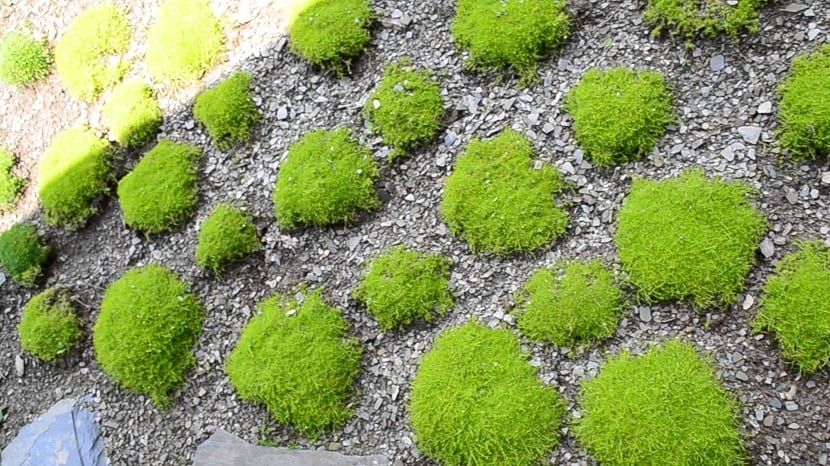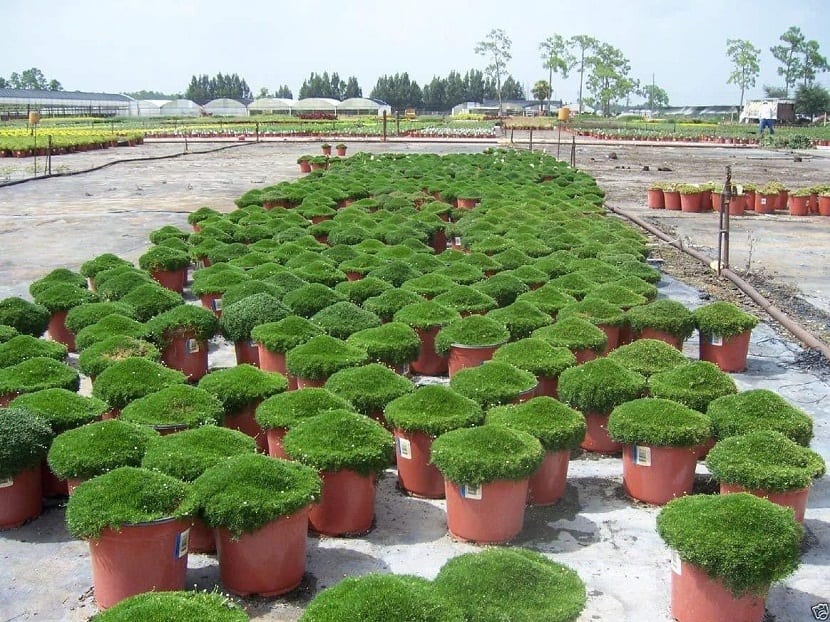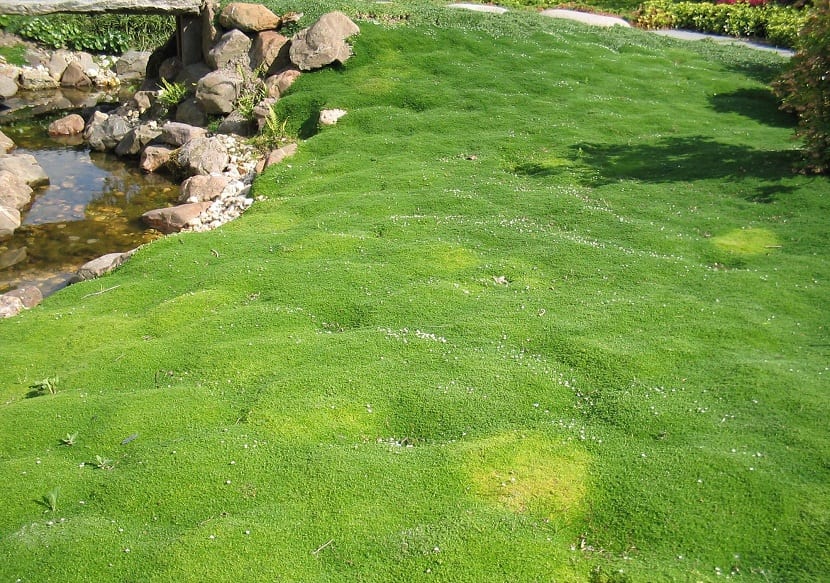
The Sagina subulata that also receives the common name of Scotch moss, It is a plant that with the best care will have the ability to create a layer of soil that is exuberant, which has a reduced growth in what are beds in wet gardens as well as around the steps and also on the paving stones.
In the spring months you have the opportunity to show some flowers that are a striking white color on top of a great green leafy.
Characteristics of the Sagina subulata

This is a durable plant that belongs to what are the Caryophyllaceae family and that has a creeping development, usually comes to form a carpet with leaves that are yellow-green, of a fairly small size, with flowers that have five white petals and that in turn make their appearance individually on erect stems that they can measure up to three centimeters in altitude.
Su flowering season It is usually done in the middle of spring and for the last weeks of summer. The origin of Sagina subulata is found in Europe, both in areas that have a warm climate and those with fairly cold climates.
Growth and space requirements
This plant can grow very quietly in a area that is in full sunlight.
Prefers the places that have a fairly humid climateHowever, it is necessary that it can drain properly, since when the water is stagnant and the soil is flooded, it can cause the root to rot.
This moss can spread until the cover of the moss becomes quite dense and it has to be placed about 10 or 15 centimeters apart the moment it is sown.
Irrigation and weeding
It is important keep this plant in top condition and for that it is necessary that the weeds are eliminated by hand.
It should be borne in mind that sharp tools should not be used that can damage roots that are shallow. Regarding irrigation, it must be done once a week using a hose or some type of sprinkler system, until we observe that the soil is completely wet.
Fertilizer
The subscription must be added at least once every year during the first days of spring. For this you have to use an approximate of about two or five kilos of compost for every 30 meters of garden area.
Said fertilizer is spread evenly on top of the plant as well as on other parts of the soil in the area. It is important to water immediately to remove the fertilizer from the leaves, as well as to reduce the vibrations of the earth. To be able to place new plants it is necessary to wait to place the compost in the moss until the arrival of spring in the second season of their growth.
Pruning and division

For pruning, the foliage must be trimmed with the help of scissors, as well as the flower stems that are dead for the last weeks of winter and to keep a check on the spread of this moss, You have to dig up those plants that are growing outside the area of what is the garden bed.
It is possible to divide this plant every couple of years or three to be able to propagate them or also to dilute the area, taking into account that it will only be in the area that is well established.
Pests and diseases of Sagina subulata
Despite the fact that this is a plant that is free of diseases, there are some parasites that can cause damage.
The worms, when feeding on its stems, usually chew them at the base and can reach a little higher. On the other hand, cutworms just like slugs and snails too, they are much more active at night.